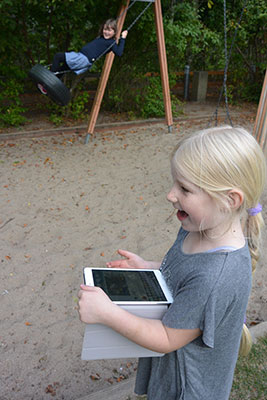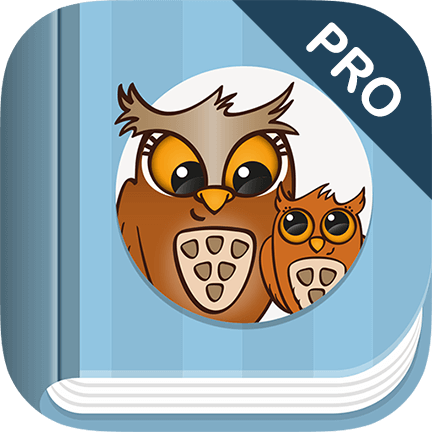By Jeppe Bundsgaard, professor MSO at the Danish Department of Education, specialising in IT, Danish and didactics.
As head of the knowledge voucher project “Writing to read,” I have spent a year following the development of the WriteReader application, which aims to support children in their literacy development.
The project consisted specifically in discussions and consultancy as well as empirical research of the first use of the application. The project resulted in a positive evaluation of the application and the practices that may develop around its usage.
Learning in informal environments
 Studies show that reading and writing can be learned if the child is invited in the reading and writing activities in a more informal environment, where it is perceived as something natural to use the written language.
Studies show that reading and writing can be learned if the child is invited in the reading and writing activities in a more informal environment, where it is perceived as something natural to use the written language.
An approach that is similar where the spoken language is learned and where the learning as such does not belong to a particular age group or institution but can be learned in many contexts, including in the family. The more experience the child has with the written language, where it is perceived as something meaningful, the more experience the child will have with the connection between letters and sounds without it depending on instruction or teaching.
One of the ways to achieve these experiences is to let the child experiment with writing. The child works and experiment with the connection between letters and sounds, which is a more motivating and active process than trying to decipher what others have written.
A self-written text also invites the child to read it again, both for itself and for others, and the fact that the child has written it also makes it more accessible.
To support the child’s discovering, writing is both about inviting the child into the everyday life of existing reading and writing activities and about creating experiences and activities that can act as (new) opportunities to be together about the written language in informal and meaningful ways. A didactic writing point is not just to show children the writing, but also to show them a world that is worth writing about – and worth writing for!
Meaningful experiments with written language
Overall conclusions
- Children can quickly and easily experience themselves as producer and author.

- It motivates the children to write – in a completely different way than with pen and paper.
- Parents get access to working together with the children about writing.
- The application initiates cooperation between children and adults in situations they would not have experienced in another way.
- It is the opportunity of developing a multimodal story about the near and dear things – the toys, experiences, loved ones, etc. It invites to verbalize the child’s universe. You can call it “real life literacy”.
- The application supports the children’s experience of how language can be both seen and heard.
